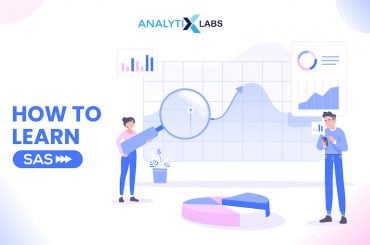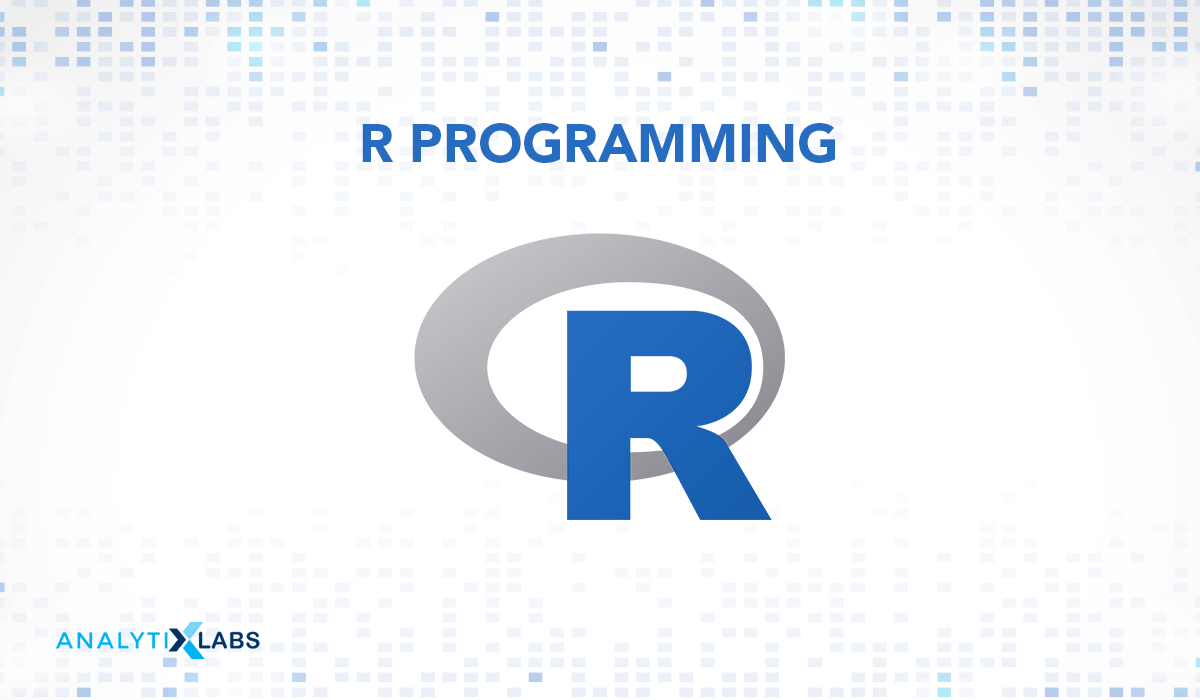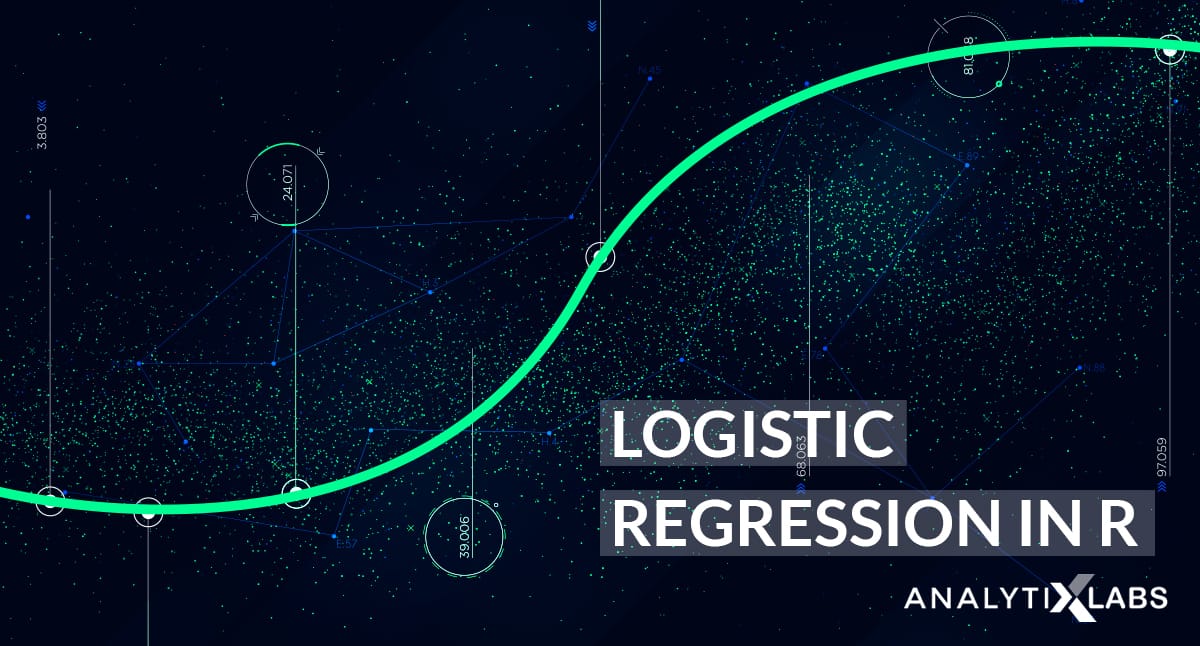Data Science is a fascinating field that requires knowledge of various tools and techniques to master. Among these tools, the programming language R holds a prominent position. Recent years have seen a growing debate in the data science community about the benefits of R and its position compared to its competitor, Python.
R has a long history and has been widely adopted in academia, research institutions, and industries. It has established itself as a trusted and reliable statistical analysis and research language.
R promotes reproducibility by providing tools like R Markdown and R Notebooks. These tools allow data scientists to integrate code, analysis, and documentation in a single document, fostering transparency and reproducibility of results.
This article explores R’s benefits, characteristics, and advantages over Python, shedding light on why R remains a valuable language in data science.
What is R?
First and foremost, R is a language and an environment for statistical computing and visualization. R is commonly recognized as the language created by statisticians for statisticians. Let’s delve into its history to grasp the reasons behind R’s creation.
History
R was developed as part of the GNU project. The GNU project involves creating the GNU operating system and its associated packages, aiming to provide free software and keep the user’s freedom as its priority. R was designed by Ross Ihaka and Robert Gentlemen while working at the University of Auckland (New Zealand).
The language is based on another language known as the S language that Bell Laboratories developed. Many consider R a different implementation of the language S. R was conceived and initially released in 1992 and 1995, respectively, while its stable beta version has been available since 2000.

Purpose
To better understand what R is, you need to know the intent with which it was created. S language has been the ideal choice for researchers, especially in statistical methodology. As R is based on S and is open source, it provides a platform for developers to participate in the research activity.
The purpose behind R has always been to have a language that effectively handles and stores data. R can perform numerous operations on arrays and matrices. It also has enough visualization capabilities to reduce needing a third-party visualization tool. Lastly, is simple enough for researchers and others to use it.
Data Analysis Steps
A big chunk of users utilizes R for data analysis. The idea behind using R is that the analysis is done in the following five steps (in every step, R provides a mechanism to complete the step effectively):
Step 1: Programming – Data Analysis requires programming, and R is a clear and easily accessible programming tool.
Step 2: Transforming – Data often needs to be transformed before it can be used, and R provides libraries like dplyr and reshape to do it.
Step 3: Discovery – The heart of data analysis is to deeply investigate data and find insights that can be done through data manipulation, hypothesis testing, etc. R can perform such things.
Step 4: Modeling – Data models must be created to understand complex phenomena. R has libraries like Caret to create any model, such as time series, linear regression, machine learning, forecasting, etc.
Step 5: Communication – The last and often most crucial step is communicating the findings. Here R, through its visualization libraries like graphics and ggplot2, can create graphs for better presentation. R Markdown or Shiny can also be used.
Components of Syntax
Lastly, R can also be understood through its peculiar syntax. R syntax contains three major components-
- Variables – these are the objects that store data
- Comments – Using the # symbol, the user can write comments to improve code readability
- Keywords – These are reserved words that have a special meaning internally
If you want to understand R better, let’s discuss why you should learn R.
Top 10 reasons to learn R programming language

R is considered the most preferred tool in the world of Data Science, and there are ten significant reasons for that.
-
Open Source
R’s big advantage over its competitors like SAS is that it is open source. This opens doors for community participation in expanding the capability of the language. On top of this, users can modify the existing code allowing rapid innovations.
No license restrictions exist as R is issued under the General Public License, and anybody can access and modify the code. Also, being open source allows it to be free, leading to democratizing its use.
The fact that R is open source has significantly contributed to its widespread reach.
-
Cross Platform

R can run on various operating systems, like Windows, Mac, or Linux. This allows users on different platforms to collaborate seamlessly with each other.
-
Use in Multiple Domains
Initially, R started with statistical research in the field of academia. However, today, R has found its place in multiple domains. Almost all domains, from retail to healthcare, use R to solve their business problems.
Today many big players use R in the industry. Facebook (Meta) uses it for behavioral analysis, while Google uses it to measure advertising campaign effectiveness.
Other software like Bing and Mozilla also involve R in their operations. Lastly and obviously, R is heavily used to analyze data collected by researchers from various fields for research experiments.
-
Community
For any language today to have a widespread impact, robust community support is required. Even if it’s not very dynamic but has a great community base, a language can appeal more to a user.
As compared to a language that might be better but has a weak community. This is because when using a language, one needs to troubleshoot and look for answers online.
A tool with a strong, friendly, active community that assists issue resolution is generally preferred. In this regard, R stands out as it is notably considered outstanding.
The R community actively participates in online forums like Stack Overflow, and developers solve numerous projects using R on platforms like Kaggle.
-
Library Size and Variety
The strength of an open-source modular language like R is gauged based on the number of available libraries. Also, the number, variety, and capability of the libraries also matter.
In all these regards, R excels. As of this article’s writing, more than 15,000 libraries are available on CRAN, with millions of functions.
Regarding variety and capability, R provides libraries for performing data manipulation, exploration, statistical modeling, etc. This supports the implementation of numerous techniques and algorithms.
-
Visualization Capabilities
A significant capability of R, when anyone explores R, is its exceptional visualization capabilities. R has its library graphics and several third-party libraries, such as ggplot2, ggvis, plotly, etc., for creating print-quality graphs. This allows the use of R in research and reporting.
-
Web Apps
Although not known for creating web applications, R has a library that can create stunning web applications known as Shiny.
The idea behind Shiny is that without learning a language like CSS, PHP, or advanced HTML, one can produce a web application and even host it on a server.
Shiny has a dedicated website where you can find sample codes for adding widgets to your web application and operationalizing them. The ease of shiny allows for creating dashboards, reporting tools, and proof of concepts in relatively less time with excellent quality and less effort.

-
Lingua Franca of Statistical Analytics
As mentioned earlier, R is a “language made by the statisticians for the statisticians”. This saying is because R originally intended to solve statistical research problems. This is why data scientists consider the inbuilt statistical libraries of R as the most reliable and easy to use for statistical computing.
R enables users to effortlessly perform a wide range of tasks, from calculating descriptive statistics to conducting hypothesis testing for inferential statistics.
Moreover, R facilitates the creation of advanced statistical models with ease. In contrast, in other languages, you may have to search for a library that provides the required capability with its quality in doubt.
-
High Paying Job Roles

Among technology professionals, knowing R is considered among the highest-paying IT skill (as per a survey by Dice Tech). Often salaries in India range between 15 lakhs to 44 lakhs INR. Typical high-paying roles that use R include Data Analyst, Data Scientist, Business Analyst, Quantitative Analyst, Financial Analyst, etc.
-
Simple and Effective
Lastly, among the crucial reasons R is so widely accepted is its simplicity. R is a well-designed language that effectively performs operations with few lines of code.
It is relatively less complicated and allows users to quickly grasp and put to use concepts like user-defined functions, loops, conditional statements, etc. This allows people from various backgrounds to start with R.
This is why people often consider R as the stepping stone language when entering the world of Data Science.
The fact that R’s development and evolution were specifically targeted towards the field of Data Science, rather than being a general-purpose language, makes it an excellent choice for individuals in this field to learn.
Apart from these ten reasons that make a compelling case for learning R, there are several benefits to learning R discussed ahead.
Benefits of learning R

In data science, there are numerous tools from which one can choose. However, certain R benefits should make you lean toward it, such as-
Supports Multiple Types of Data
A major R benefit is that it allows operating with various data types and structures. These include operating on vectors, matrices, arrays, data frames, etc. Some data structures can be homogenous, while others can be heterogeneous, giving users a wide range of functionalities.
Data Cleaning, Wrangling, and Scalping
When performing research, one needs to collect data from various sources. To do so, scalping needs to be performed. This data, however, can be erroneous and need to be cleaned, and here R comes in handy. Also, data wrangling is essential when preparing data, and R has good enough libraries to perform all these operations.
Interpreted Language
Among the major benefits of R is its simplicity. Unlike other common programming languages, R is an interpreted language and doesn’t need a compiler. This means the code doesn’t go through a compiler to convert it into a usable program.
Instead, R interprets the code into lower-level calls and pre-compiles it. This effortless code-writing process simplifies the installation and execution of R, as fewer moving parts are involved in running R code.
Machine Learning Capabilities
Today, many models use machine learning algorithms, mainly because the size of available data and the complexity of problems are increasing. Here R can provide itself as a great data science tool.
As the most prominent machine learning algorithms can be used and implemented using R., It’s the sophistication of machine learning algorithms in R that even Facebook uses R for many of its machine learning studies.
Industry professionals often consider R for performing complex operations such as sentiment analysis and mood predictions.
Database
Every other organization nowadays generates data in large volumes. This makes data storage necessary. Most of such data is stored in databases, and data science tools need to have the capability to interact with these databases. Among the R benefits are the ease of connecting to various databases due to its numerous libraries, including Roracle, RmySQL, etc.
Reproducible Research
R is a scripting language. You can write scripts that allow you to perform specific steps repeatedly and reproduce the results you have achieved multiple times. To put this R benefit in context, let’s take an example.
You are a researcher and are using a tool like SPSS. Like any other analysis, you first load the data, clean it, adjust it, and perform a few more data processing steps. Lastly, you analyze the data and get some interesting but unusual findings.
Later, when you want to show the results again to your colleagues, you’ll need to perform all the steps exactly as you did before. You may miss a step or not do it like you did earlier.
To resolve this issue, it would have been better to perform all the steps by writing a code you could execute in a single go by clicking a ‘run’ button. This is exactly the functionality R provides you.
You can write code for every step creating a script that can be executed with just a single click. This allows for reproducible results and allows you to modify codes, try different ideas, and see the results.
Quick Implementation of New Research
Among the benefits of R is its continuing significance in research. R traces its roots in the scientific community and is an open-source language. The new theoretical approaches are generally available for practical application earlier in R.
As researchers are familiar with R, there is a high likelihood that someone will develop a library for R to leverage new research concepts and exploit emerging techniques.
Serves Specific Needs
As mentioned earlier, a major reason for learning R is that it is ubiquitous, as more or less every industry uses it. This has led to the development a great characteristic of R: it provides highly particular and domain-specific functionalities.
For example, libraries and functionalities in R allow individuals in the finance domain to create econometric models and perform anomaly detection. Similarly, R can be leveraged for churn management, subscriber profiling, and personalized advertising for the telecom industry. Whereas the computational biology fields employ R to perform genomic analysis.
Given all the reasons and benefits of learning R, many questions often arise in people’s minds. If R is such a great tool, why do people use its adversary Python and why do companies also heavily rely on it? There are several reasons why you might want to stick to R, as discussed ahead,
Is it better to learn Python or R?
The problem of choosing between R and Python can be a tricky one as both have their advantages. Also, it depends on personal preference and comfort as both are highly capable and versatile tools for solving data science-based problems. However, there are certain aspects where R outshines Python that should be kept in mind when deciding between the two tools.
-
Specialties
R specializes in resolving statistical computing-related issues. Also, R covers various issues from Finance to Psychometrics to Genetics. On the other hand, Python can develop web services and, as a general-purpose language, perform many operations that may not be related to data science.
-
Functionalities
R, designed specifically for statics, visualization, and modeling, has numerous inbuilt functionalities that the user can use to perform such operations. On the other hand, Python has been adjusted for solving data science problems through various third-party libraries such as Numpy, Pandas, Sklearn, etc. The inbuilt functions of R are generally more reliable and robust.
-
Key Application
If you have a primary goal of data wrangling, hypothesis testing, visualization, and statistical modeling, you can leverage R through libraries such as stats, dplyr, reshape2, ggplot2, ggvis, lattice, caret, etc. Python specializes in natural language processing and deep learning. Its libraries, like NLTK, Keras, and OpenNN, allow Python to create such models.
-
Text Editing Platform
Rmarkdown – the text editing platform provided by R is universal. One can create slides, reports, papers, etc., using Rmarkdown. Python provides Jupyter Notebook as an answer; however, the capability of Rmarkdown is much higher.
-
Deployment
When you create a model or a script to generate a report or visualize data, it’s a good idea to deploy it so that others can easily use it. Here R has a great library known as ‘Shiny’ that allows the deployment of web applications exceptionally quickly.
Python has practically no answer to Shiny regarding the ease of use and the time it takes to get the app up and running.
-
IDE Simplicity
R has a single IDE generally used with it: R Studio. Python offers multiple IDEs, including Spyder, Jupyter Notebook, etc., and developers often use VSCode to run Python code. R Studio takes the cake regarding simplicity and ease of use. It is highly customizable, and the user can manipulate the font size, color, and style and change the panes’ layout as they desire. R Studio is one of the cleanest IDE, improving the user experience with R.
-
Package Quality
While the libraries in Python are of good quality and are highly capable, the libraries in R have a much high standard of quality. Libraries in Python, such as Sklearn and Pandas, have excellent documentation, but all of the R’s libraries are of such standards.
The main reason for this is CRAN (Comprehensive R Archive Network) which strictly controls the libraries made available through it. It ensures that each library has complete documentation and even many examples. This makes exploring new libraries easy for the users of R.
-
Visualization Capabilities
The main library from Python for visualization is matplotlib, whereas R has ggplot2. There is hardly any doubt that the visualization capabilities of R are superior to Python. This is because matplotlib requires you to write extensive code from scratch to perform anything non-standardized.
But ggplot2 has a long list of functions that is tough to exhaust and fully explore. All these factors allow users to use ggplot2 to easily create complex graphs without writing a lot of complicated code.
-
Function centric
Object Oriented Languages are a must to know when dealing with development. When you compare R and Python, Python focuses a lot more on classes. R prioritizes functions, and the use of classes generally takes a backseat. So if you wish to learn about OOPs concepts and classes, you should opt for Python.
Also read: Why Use Python For Data Analysis?
If the discussion on R interests you, you might be interested in learning R. Let’s now discuss the user experience of learning this superb language.
How long will it take to learn R?
The two most common questions related to R are how to learn R programming and how difficult it is to learn it. Let’s first answer the latter question.
There are broadly two schools of thought regarding this, and we have discussed both ideas ahead.
- The conventional thinking

If you google Python v/s R or the learning curve of R, you will probably find that R has a steeper learning curve than Python. And it takes anywhere from six months to a year to learn professionally.
- The myth of the steep learning curve
The other view is that learning r programming is not difficult as R is not a complex language. This is because most people learn R academically while simultaneously studying statistics. Also, individuals learning a programming language for the first time create an impression of R as a tough language. In contrast, individuals learning Python typically come from a computing background and have prior familiarity with languages like C++ and Java.
No matter what the case, you can follow these seven steps to learn the R language-
- Identifying why you want to learn R and establishing your goals
- Start with R Basics
- Learn R online by attending an online Bootcamp-styled course to enhance your knowledge
- Work on R-related projects (refer to websites like Kaggle for project ideas)
- Explore and try to solve advanced problems
- Join and become active in the R community
- Practice a lot and participate in hackathons
FAQs
Why do we need to learn R?
Many scientists consider R an important tool in the world of data science. It has a lot of functionalities to perform various operations on data.
Is it worth learning R?
Yes, it is worth learning R. Of the many reasons why one should learn R language is that the job prospects are good, as many domains use R in their day-to-day operations. If you think R is worth your time, you can learn R online or through books, if you prefer.
Is R language in demand?
Yes, R is in demand. The increasing number of R-related stack overflow traffic and libraries available on CRAN is proof of that.


We hope this article has provided you with a deeper understanding of the benefits of R in data science. Please contact us if you have any further questions or need more information about this powerful tool!









1 Comment
I just finished reading your blog post on the benefits of using R in data science, and it’s a comprehensive and insightful analysis. The way you highlight the advantages of R in terms of its versatility, extensive libraries, and statistical capabilities is impressive. Your examples and explanations make it clear why R is a preferred choice for data scientists. Additionally, your comparison with other programming languages adds valuable context to the discussion. Thank you for sharing this informative post that emphasizes the benefits of utilizing R in data science. Well done!